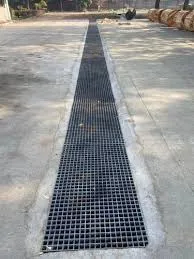
-
 Afrikaans
Afrikaans -
 Albanian
Albanian -
 Amharic
Amharic -
 Arabic
Arabic -
 Armenian
Armenian -
 Azerbaijani
Azerbaijani -
 Basque
Basque -
 Belarusian
Belarusian -
 Bengali
Bengali -
 Bosnian
Bosnian -
 Bulgarian
Bulgarian -
 Catalan
Catalan -
 Cebuano
Cebuano -
 China
China -
 China (Taiwan)
China (Taiwan) -
 Corsican
Corsican -
 Croatian
Croatian -
 Czech
Czech -
 Danish
Danish -
 Dutch
Dutch -
 English
English -
 Esperanto
Esperanto -
 Estonian
Estonian -
 Finnish
Finnish -
 French
French -
 Frisian
Frisian -
 Galician
Galician -
 Georgian
Georgian -
 German
German -
 Greek
Greek -
 Gujarati
Gujarati -
 Haitian Creole
Haitian Creole -
 hausa
hausa -
 hawaiian
hawaiian -
 Hebrew
Hebrew -
 Hindi
Hindi -
 Miao
Miao -
 Hungarian
Hungarian -
 Icelandic
Icelandic -
 igbo
igbo -
 Indonesian
Indonesian -
 irish
irish -
 Italian
Italian -
 Japanese
Japanese -
 Javanese
Javanese -
 Kannada
Kannada -
 kazakh
kazakh -
 Khmer
Khmer -
 Rwandese
Rwandese -
 Korean
Korean -
 Kurdish
Kurdish -
 Kyrgyz
Kyrgyz -
 Lao
Lao -
 Latin
Latin -
 Latvian
Latvian -
 Lithuanian
Lithuanian -
 Luxembourgish
Luxembourgish -
 Macedonian
Macedonian -
 Malgashi
Malgashi -
 Malay
Malay -
 Malayalam
Malayalam -
 Maltese
Maltese -
 Maori
Maori -
 Marathi
Marathi -
 Mongolian
Mongolian -
 Myanmar
Myanmar -
 Nepali
Nepali -
 Norwegian
Norwegian -
 Norwegian
Norwegian -
 Occitan
Occitan -
 Pashto
Pashto -
 Persian
Persian -
 Polish
Polish -
 Portuguese
Portuguese -
 Punjabi
Punjabi -
 Romanian
Romanian -
 Russian
Russian -
 Samoan
Samoan -
 Scottish Gaelic
Scottish Gaelic -
 Serbian
Serbian -
 Sesotho
Sesotho -
 Shona
Shona -
 Sindhi
Sindhi -
 Sinhala
Sinhala -
 Slovak
Slovak -
 Slovenian
Slovenian -
 Somali
Somali -
 Spanish
Spanish -
 Sundanese
Sundanese -
 Swahili
Swahili -
 Swedish
Swedish -
 Tagalog
Tagalog -
 Tajik
Tajik -
 Tamil
Tamil -
 Tatar
Tatar -
 Telugu
Telugu -
 Thai
Thai -
 Turkish
Turkish -
 Turkmen
Turkmen -
 Ukrainian
Ukrainian -
 Urdu
Urdu -
 Uighur
Uighur -
 Uzbek
Uzbek -
 Vietnamese
Vietnamese -
 Welsh
Welsh -
 Bantu
Bantu -
 Yiddish
Yiddish -
 Yoruba
Yoruba -
 Zulu
Zulu
frp manhole cover
The Evolution and Benefits of FRP Manhole Covers
In the realm of urban infrastructure, manhole covers play a pivotal role in ensuring public safety and accessibility. Traditionally made from heavy metals like cast iron, manhole covers have undergone significant transformations over the years to incorporate materials that enhance functionality, durability, and cost-effectiveness. One such innovation is the use of Fiber Reinforced Polymer (FRP) in manufacturing manhole covers, which brings a host of benefits, making it an increasingly popular choice among engineers and urban planners.
FRP is a composite material made from a polymer matrix reinforced with fibers, typically glass fibers. This combination results in a material that is exceptionally strong yet lightweight, offering several advantages over traditional materials. First and foremost, FRP manhole covers are considerably lighter than their metal counterparts. This reduction in weight not only facilitates easier installation and maintenance but also minimizes the risks associated with manual handling. Workers are less likely to suffer injuries related to heavy lifting, making construction sites safer.
Additionally, FRP manhole covers exhibit superior corrosion resistance. Unlike cast iron or other metals, which can corrode and degrade over time due to exposure to moisture and soil chemicals, FRP is impervious to such destructive forces. This translates to a longer lifespan and reduced replacement costs. Urban areas often face challenges related to flooding and water management; by utilizing corrosion-resistant materials like FRP, municipalities can ensure their infrastructure remains intact and functional.
The Evolution and Benefits of FRP Manhole Covers
Moreover, FRP manhole covers are non-conductive, which is a crucial feature in environments where electrical safety is a concern. By reducing the risk of electrical hazards, these covers enhance safety for both the public and maintenance workers. Similarly, FRP is also non-magnetic, making it suitable for areas where electronic and communication signals are essential, as it does not interfere with signal transmission.
frp manhole cover

The design flexibility offered by FRP is another significant advantage. These covers can be molded into various shapes and sizes, accommodating the specific requirements of urban landscapes. They can also be manufactured in different colors and finishes, allowing for aesthetic integration into their surroundings. This customization potential helps cities maintain their visual appeal while ensuring functionality.
In addition to practicality, the sustainability aspect of FRP materials should not be overlooked. Many FRP products are made from recycled materials and can themselves be recycled at the end of their life cycle. This aligns well with the growing emphasis on environmentally friendly practices in urban development and infrastructure management.
Despite their many advantages, FRP manhole covers are not without challenges. The initial cost of FRP can be higher than traditional materials, which might deter some municipalities from adopting them. However, when one considers the long-term savings associated with durability, maintenance, and replacement, FRP manhole covers can provide a cost-effective solution over their lifespan.
As urban infrastructure continues to evolve, the adoption of innovative materials like FRP will likely become more prevalent. The benefits of using FRP manhole covers—ranging from safety and durability to environmental sustainability—underscore their potential to improve city management and infrastructure reliability. As cities grow and face new challenges, embracing such advancements is essential for creating resilient urban environments that serve the needs of their communities effectively.
In conclusion, the transition to FRP manhole covers symbolizes a progressive step toward modernizing urban infrastructure, ensuring safety, efficiency, and sustainability. As cities continue to innovate, the integration of such advanced materials will undoubtedly enhance the quality of urban life while paving the way for future developments in infrastructure design and management.









